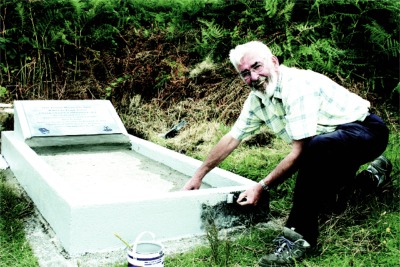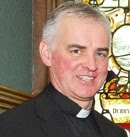Fr Hegarty - a martyr never
forgotten
27.05.11
|
THE Bishop of Derry, Dr
Seamus Hegarty will be the principal celebrant this
Sunday at an open air mass at Fr Hegarty's Rock at 4pm
to mark the 300th anniversary of the death of the
martyred priest. In the following feature, the bishop's
spokesperson, Fr Michael Canny, reflects on the story of
one of Buncrana's most enduring historic figures. |
The story of Father
Hegarty’s Rock begins with the series of Penal Laws
imposed on Ireland by the British. The Penal Laws were
introduced into Ireland in the last years of the 17th
century. The laws required all bishops, deans,
vicars-general, and friars were to leave the country and
if they returned, to be put to death. Secular priests at
home could remain if they were registered. In 1709,
however, they were required to take an oath of
abjuration, which no priest could conscientiously take.
The enforcing of the various laws had a pronounced
effect, disenfranchising the majority of the Irish
population, in favour of the minority established Church
of Ireland. Though the laws also affected supporters of
the Presbyterian Church in Ireland their principal
victims were members of the Roman Catholic Church,
meaning over three quarters of the people on the island. |
 |
|
Peter Gurrie from Fahan, tends Fr
Hegarty's grave on the shore path between Porthaw and
Stragill, Buncrana. |
The Penal Laws reduced the
Catholic population to dire poverty, but it also had the
effect of strengthening their will to survive, and
reinforcing their belief in the ‘old’ religion, their
religion and the faith handed down by their parents and
grandparents. If anything, the Faith of the people
became even stronger, and only a mere handful of priests
deserted the faith and their people by ‘conforming’.
It is believed that 400 priests had been deported by
1698, while there was no archbishop in the country from
1692 to 1714. Despite the fact that there was £5 reward
for a priests head, the clergy survived, while the
infamous ‘priest hunters’ frequently became the victims
of revenge by the many Irish rapparees, (pike wielding
persons) who at this time roamed the countryside. Mass
was still celebrated at mass-rocks in the glens and
woodlands, while fourteen bishops also managed to
survive in disguise. |
 |
Father Hegarty was one of
the priests that remained to serve his parishioners but
unfortunately his faithfulness proved fatal. Father
Hegarty was born in 1649 and was ordained in Dundalk in
1672 by Oliver Plunkett, Primate of Ireland who nine
years later was executed on 1st July 1681. Father
Hegarty was parish priest at Fahan from 1704 until his
death in 1711. During penal times Father Hegarty lived
in a small cave on the banks of the Swilly about two
miles north-west of Buncrana and under the shadow of
night did his best to carry out the ministrations of his
religion for his community. Maghtochair, writing about
Inishowen in the 1860s stated that Father Hegarty’s
retreat was unknown to all save his sister, who lived
with her husband and family nearby. For a considerable
time, Father Hegarty’s sister used to bring provisions
to him at the beginning of each day without her family
questioning the object of her journey. |
|
Fr Michael Canny. |
However, her husband
eventually suspecting her mission followed her and so
discovered the hiding place of her fugitive brother.
Tempted by the reward he led a guard of soldiers from
the garrison at Buncrana to apprehend his own brother in
law.
When the soldiers came upon Father Hegarty, he putting
his faith in God, plunged into the water with the
resolve of swimming to the opposite shore. The soldiers
did not want him to be drowned or be shot in the water
for fear that the body would be lost and therefore they
would have no evidence of his death – for this reason
alone they coaxed Father Hegarty to the shore reassuring
him that they would spare his life. However, their
promises where empty. As soon as Father Hegarty reached
the shore he was seized, his head cut off and his body
buried on the spot where they committed the deed. To
this day Father Hegarty’s rock and grave is visited by
locals and many visitors to the area and despite the
passage of many years, indeed 300, his name has not been
forgotten. |
|

